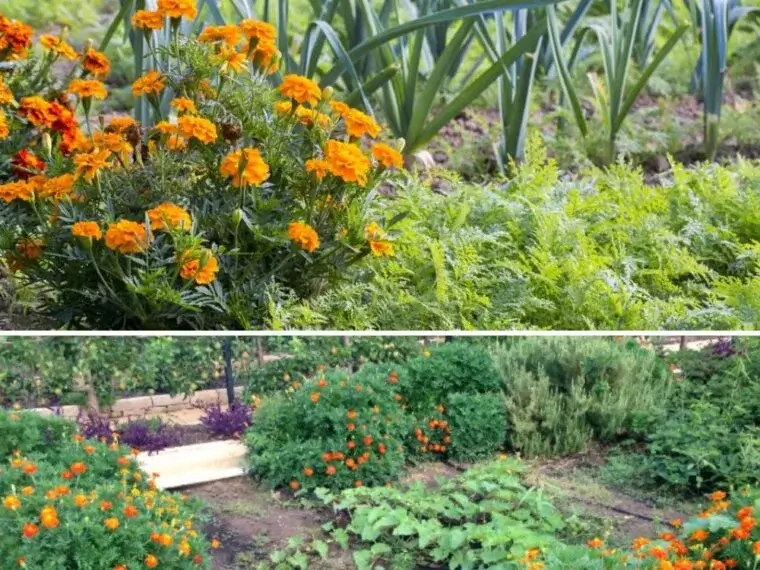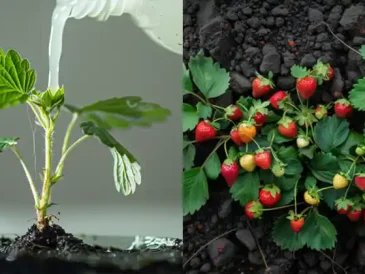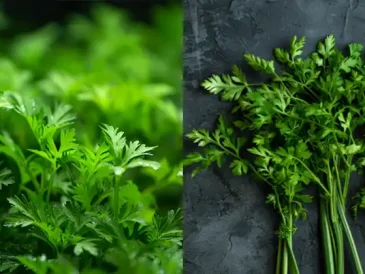Planting marigolds in your vegetable garden is indeed a popular and highly beneficial practice among gardeners. These vibrant flowers offer a range of advantages, from pest control to soil enrichment. Here’s a detailed look at why marigolds are a fantastic addition to your garden and how to make the most of them.
Benefits of Planting Marigolds in Your Vegetable Garden
1. Pest Repellent
One of the primary reasons gardeners plant marigolds is for their ability to repel pests. Marigolds contain compounds such as thiophenes and linalool that are known to deter various insects. Here’s how they help:
- Nematodes: Marigolds, especially French marigolds (Tagetes patula), are effective at repelling nematodes—tiny soil-dwelling worms that can damage plant roots.
- Aphids and Beetles: The strong scent of marigolds can help keep aphids, beetles, and other common garden pests at bay.
- Whiteflies and Caterpillars: The fragrance of marigolds can also repel whiteflies and caterpillars, reducing their impact on your vegetables.
2. Attracting Pollinators
Marigolds are not just useful for pest control; they also attract beneficial insects. Their bright, colorful blooms are particularly appealing to:
- Bees: Marigolds are excellent for attracting bees, which are essential for pollinating many vegetable plants.
- Butterflies: The flowers also attract butterflies, which can help pollinate your garden and add beauty.
3. Soil Enrichment
Marigolds contribute to soil health in several ways:
- Companion Planting: Marigolds can improve soil structure and increase its organic matter content. They can also help suppress weeds and improve soil aeration.
- Green Manure: When marigolds are allowed to decompose in the garden, they act as a form of green manure. Their roots release organic matter into the soil, which can help improve its fertility.
4. Aesthetic Appeal
Marigolds add a burst of color to your garden with their vibrant yellow, orange, and red flowers. This not only enhances the visual appeal but also makes it easier to spot pests and issues among your vegetables.
5. Disease Suppression
Marigolds have been shown to have some effects in suppressing plant diseases:
- Fungal Diseases: The compounds in marigolds can help reduce the incidence of certain fungal diseases that affect vegetables.
- Pathogen Suppression: Their roots may help suppress soil-borne pathogens that can harm other plants.
How to Plant and Care for Marigolds
1. Choosing the Right Marigold Variety
- French Marigolds (Tagetes patula): These are typically smaller, with compact blooms and strong pest-repellent properties.
- African Marigolds (Tagetes erecta): Larger flowers that are often used for their robust presence and pest-repelling qualities.
- Signet Marigolds (Tagetes tenuifolia): Known for their small, edible flowers and strong aroma.
2. Planting Marigolds
- Location: Marigolds thrive in full sun but can tolerate partial shade. Choose a sunny spot in your vegetable garden.
- Soil: They prefer well-draining soil with a pH between 6.0 and 7.0. Amend the soil with compost if needed.
- Spacing: Space marigolds about 8 to 12 inches apart to ensure good air circulation and avoid overcrowding.
- Timing: Plant marigold seeds directly in the soil after the last frost or start them indoors 6-8 weeks before the last frost date.
3. Care and Maintenance
- Watering: Keep the soil consistently moist but not waterlogged. Marigolds are relatively drought-tolerant once established.
- Fertilizing: Marigolds generally do not require heavy fertilization. A balanced, all-purpose fertilizer can be used if the soil is poor.
- Deadheading: Remove spent blooms to encourage continuous flowering and maintain a tidy appearance.
4. Pest and Disease Management
- Pests: While marigolds repel many pests, they can sometimes attract aphids. Monitor for pests and treat as needed.
- Diseases: Marigolds are relatively disease-resistant but be sure to provide adequate spacing and avoid overhead watering to minimize fungal issues.
Additional Uses for Marigolds
- Culinary Uses: Some marigold varieties, particularly Signet marigolds, have edible flowers that can be used in salads or as garnish.
- Medicinal Uses: Marigolds have traditional uses in herbal medicine, such as for their anti-inflammatory properties.
Conclusion
Planting marigolds between your vegetables is a smart and effective gardening strategy that offers multiple benefits. From repelling pests and attracting beneficial insects to enriching the soil and adding color, marigolds enhance the health and productivity of your vegetable garden. By choosing the right variety and providing proper care, you can make the most of these versatile flowers and enjoy a thriving, vibrant garden.
If you have any more questions about gardening or specific tips on growing marigolds, feel free to ask!




